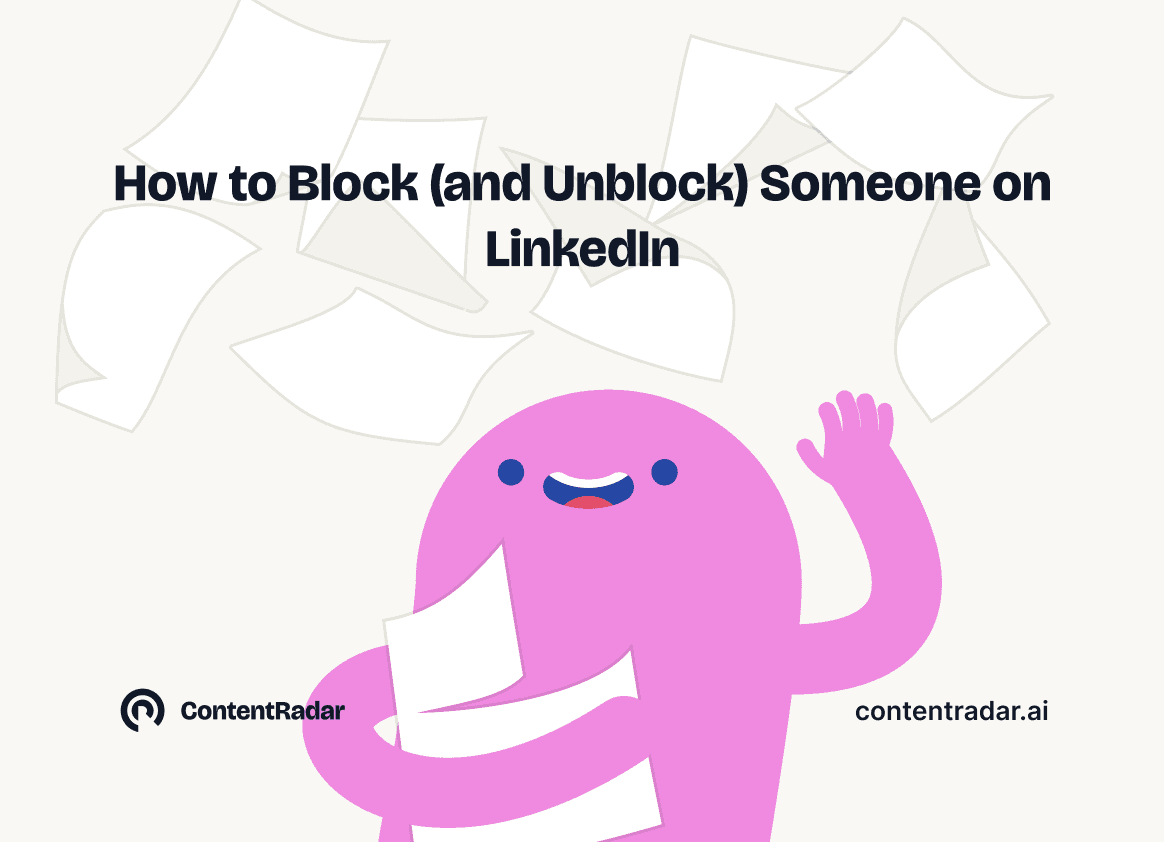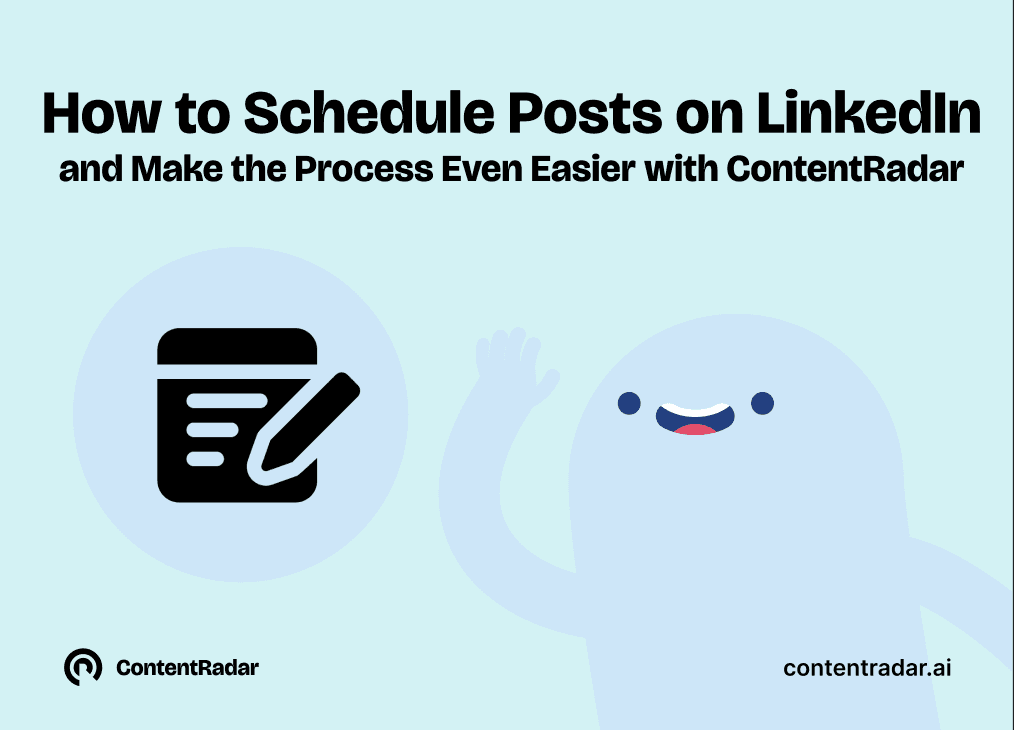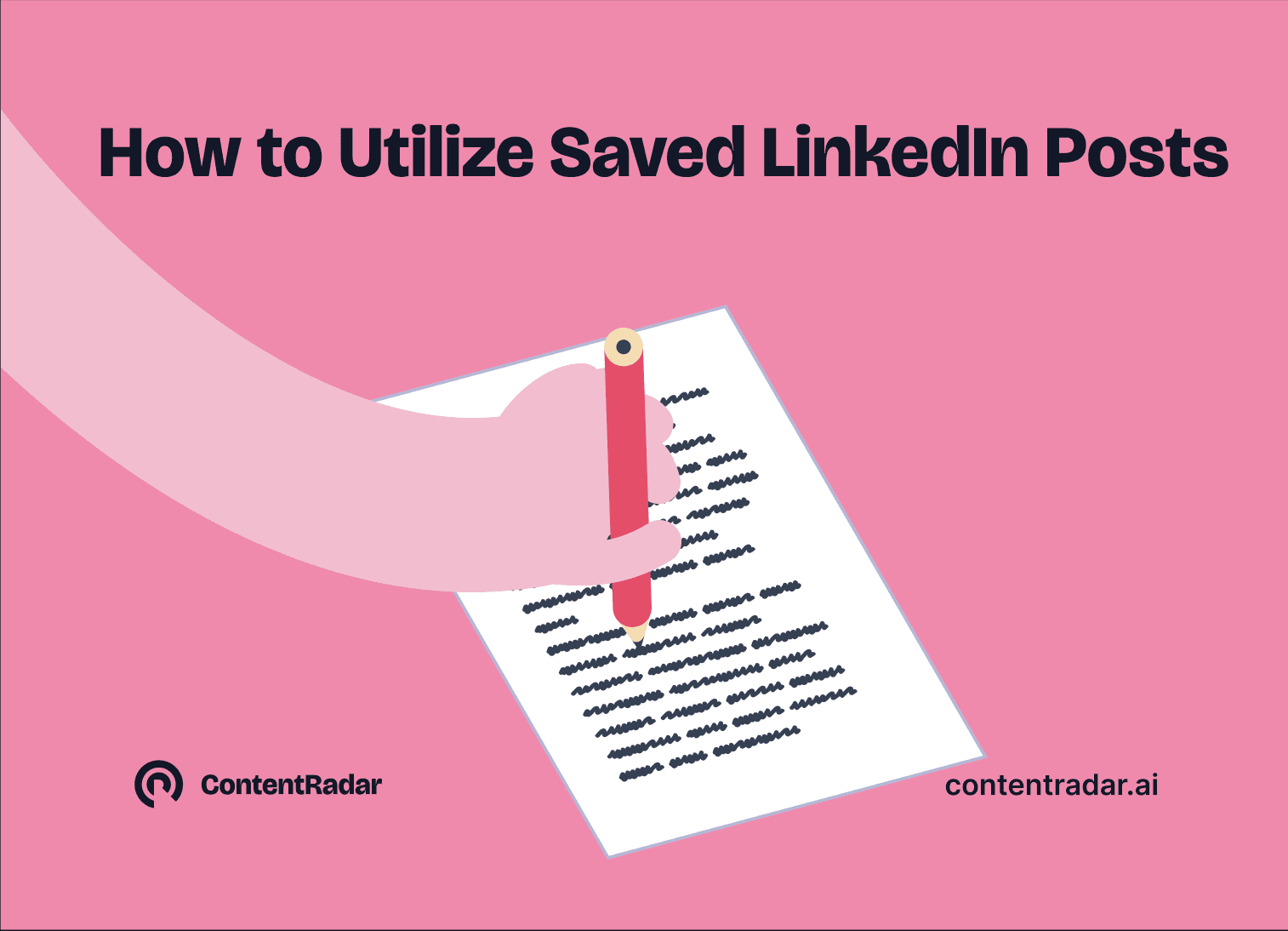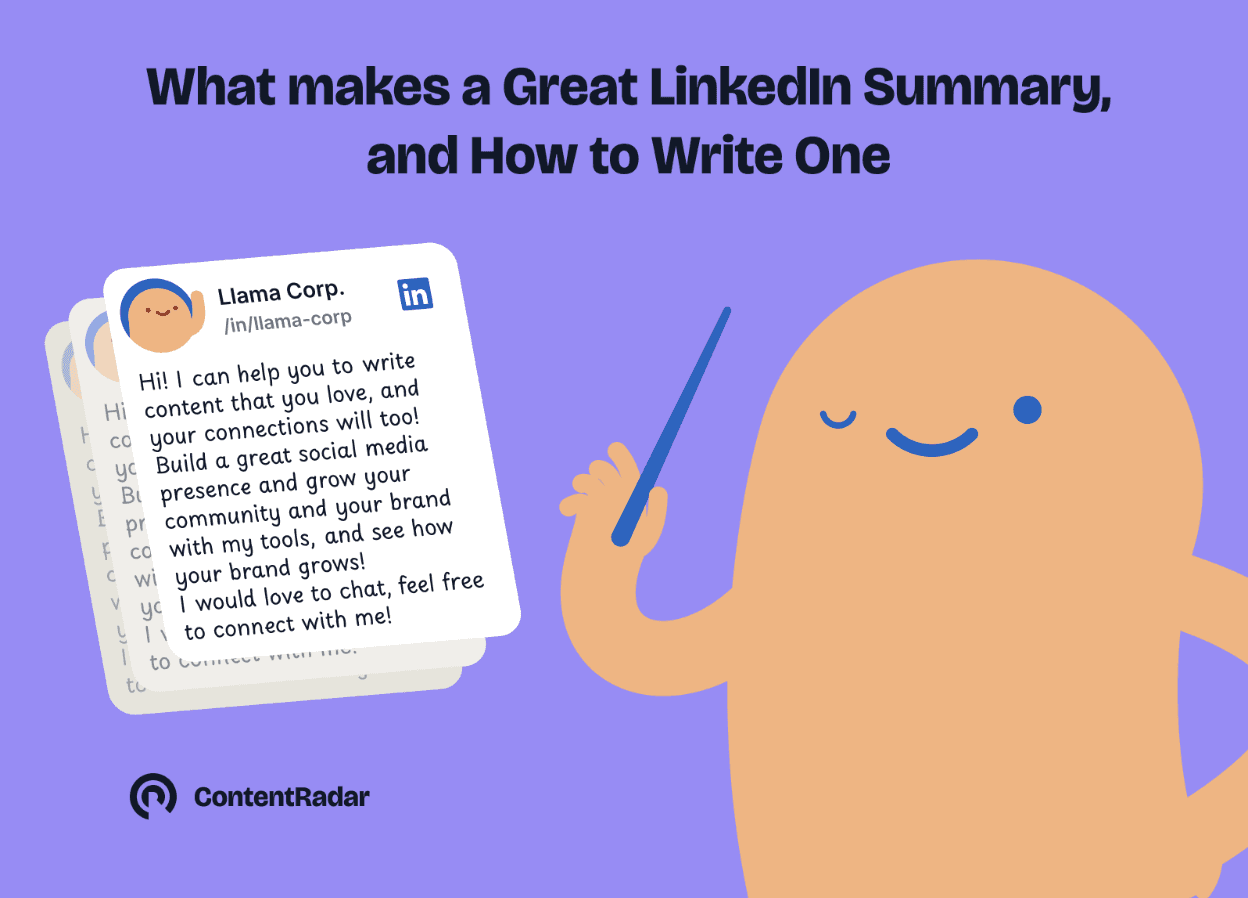19 of the Best LinkedIn Profile Summary Strategies, With Examples

Feb 20, 2025
2,000 words. That’s all you have to introduce yourself, your professional goals, accomplishments, and wishes for the future in your LinkedIn Profile Summary. An effective LinkedIn bio can be hard to come up with and write. But, by utilizing a few guiding points and good LinkedIn profile examples, it is simple to become inspired and be able to write both an engaging and effective LinkedIn profile summary.
What is a LinkedIn Profile Summary?
A LinkedIn Profile Summary, or the “about” section on your profile, is the space for a short introduction to your professional profile that highlights who you are, your skills, your career goals, and anything else you deem important to share with recruiters. In your profile summary, you should emphasize your past achievements, and what you plan on achieving.
A good LinkedIn Profile Summary should quickly summarize what you want recruiters to know about yourself and what you can contribute to their business.
Unfortunately, simply stating these accomplishments, goals, and aspirations may not be enough. There are over 1.15 billion monthly active users on LinkedIn.
You need your profile summary to stand out among all these users, and that comes with a bit of work.
A profile summary is often the first thing that people will see when they click on your profile, so you need to make a great first impression. A good profile summary will leave recruiters interested in what you have to offer, leading to more opportunities in your personal and professional worlds.
The Benefits of a Good LinkedIn Profile Summary
A great LinkedIn Profile Summary is effective in:
Boosting Your Profile Visibility
Highlighting Your Brands and Goals
Making more Connections and stronger Networking channels
Proving your Compatibility
Showing off your personality
Think of a LinkedIn Profile as a first impression- you want it to be strong, and showcase who you are and what your business brings.
How Do I Write A Good LinkedIn Profile?
To write an effective LinkedIn Profile Summary that grabs the attention of recruiters follow these steps:
Organize what you want to say- Having an outline of points that you want to make can save you time, and keep you on target.
Have a hook- LinkedIn only shows three lines of your summary before there is a “see more…” option. Demand their attention and persuade them to click for more by having an interesting opening line.
Be Brief- Highlight your professional journey and accomplishments in 1 sentence for each. Include industry-specific keywords, and statistics if you can.
Close with a personable statement- Encourage people to reach out to you. An example can be: “Let’s Connect! I look forward to hearing about new opportunities, teamwork opportunities, and marketing strategies.”
Check for Grammar, Spelling, and Tone- Make sure there are no spelling or grammatical errors in your summary. Also, write in the first person. Your summary is about your accomplishments, as stated by you.
Give thought to utilizing LinkedIn content creation tools- Tools such as ContentRadar can help you to orchestrate creating an effective LinkedIn summary and profile in seconds.
19 of the Best LinkedIn Profile Summary Examples
Short Paragraphs (Example 1)
On Charlotte’s account, she uses short and simple paragraphs to describe her current role, her previous role, and what she did even before that. In three simple paragraphs, she has highlighted her professional journey from its start to where it currently is. If Charlotte’s paragraphs were to be any longer, she would lose the attention of readers, as her LinkedIn summary would lack clarity and conciseness.

Short Paragraphs (Example 2)
Although Emily has more content in her LinkedIn profile summary than Charlotte, she has much of a story to tell about her personal life and her connection to her professional life. Her paragraphs are no longer than a couple of sentences long, and they tell a descriptive story. She also uses the third-person narrative to tell this story, which is helpful because she avoids sounding too overbearing or boastful.



Compelling Hook (Example 1)
In Shruti’s About section, she introduces her past ‘clueless’ self, showing that she has a story, one that also comes with some personal progress. This opening line hooks readers, and makes them want to read more about her story. By utilizing an opening sentence about your past self, you can showcase how you have grown over time in your professional world.

Compelling Hook (Example 2)
Björn has an intro that captures the attention of readers because he goes right into saying that he acknowledges that some people may not have enough time to read a full LinkedIn summary, and gives them a 10-second summary. He then goes on to state “the longer version” of his summary. This sort of reverse psychology makes readers want to read the longer version of his summary section, where he then goes into the benefits of his work to those who continue to read his profile.



Have Visual Appeal (Example 1)
Maya makes her profile summary visually appealing and sectioned without having too much going on. Her summary is easy to read, and it uses a mix of short, concise sentences and bullet points. With her use of emojis, Maya makes for a good linkedin profile summary because it is eye-catching, as emojis are not commonly used within this section of a LinkedIn profile. Be careful not to use too many if you choose to go this route though, as it can lack professionalism.



Have Visual Appeal (Example 2)
Artur’s LinkedIn profile summary, although it looks long, it is easy to read because of all the spaces in between lines. It makes the summary appear more digestible, and it becomes faster to read because people don’t get caught up in lengthy paragraphs. This LinkedIn profile summary is quick to glance over, and with fun bullet points and numbers, it is organized well and not too overbearing.



Include Core Strengths
Through listing your core strengths like Federico does here, you can explicitly say what you are good at, and what you want people to take away from your LinkedIn summary about you. By laying out what you have to offer, recruiters and other people don’t have to guess what your could bring to their table.


Step By Step Method
Alexander uses a step-by-step method to give insight to his profile viewers on what his Authority Branding is, and how it can help clients. Yet, he doesn't give too many details away, because he wants people to engage with his services by connecting with him.



Give a Problem-Solution Approach
Lars gives us the framework of a problem, then gives the solution using his brand in his summary. He brings up the problem that his consumer base will have and then offers a solution within his profile summary. This shows that there is a clear path between a problem and a solution if his product were to be used by someone looking at his account.


Be Personable
In Clara’s summary, she not only mentions her employment experience but also sneaks in ‘kindergarten room mom’ and ‘coffee’ in her interests. These two anecdotes give readers the idea that Clara is personable and has a fun personality. However, she is capable of balancing her professionalism by listing her professional experiences and interests before her personal anecdotes.

Utilize Quantitative Data
In Justin Nassiri’s about section, he introduces himself as the CEO and Founder of Executive Presence, and then goes on to state quantitative data to strengthen the connection between his brand, and his success as a CEO and Founder. He also gave a timeline. By stating that “in under three years”, he has built this strong executive presence, Justin proves to people that both he and his product use time effectively.


Use a Quote (Example 1)
By using this well-known quote, Tchia grabs people’s attention because people are familiar with it, and want to see how her story relates to the quote. She talks about how she has pursued the male-dominated industry of business, and how she stands out through her combined knowledge of software development and business sales and management. Her use of bold and subtle, yet different, font of the quote also makes the LinkedIn profile summary stand out from the start. Then, with the use of the blue emojis, her profile continues to stand out through her use of color.


Use a Quote (Example 2)
Vanessa also uses a quote to open her LinkedIn profile summary, this time to highlight her successful career. While Tchia used a quote to highlight her personal story, by using this quote, Vanessa is opening the door for people to see what her business and its relationship to herself is. This is a great quote to use for her LinkedIn summary because it relates to her question skills, her external/internal growth, and her confidence in herself.


Client Reviews
By using client reviews, Shoaib build his social and professional credibility for his platform. Client reviews are a form fo social proof that a business works, and they highlight the impact that your businesses has on its users. Often, LinkedIn profile summaries include what a business can do, but client reviews prove what you and/or your business have done for your consumer. Having client reviews in your LinkedIn summary also shows that you are communicative and collaborative with your connections.




Set Connection Boundaries
Rita makes it known that she wants only those who she knows, or if you have met her, to connect with her. At the end of her LinkedIn summary, she tells those interested in connecting with her to send her an intro message directly.
By doing this, she is turning away people who want to connect with her which would give her brand no benefit. At first, this may seem harsh, but then she states that she does the same to other accounts, which softens the blow of this disclaimer.
Setting this boundary is good to include in Rita’s LinkedIn profile summary because it shows that she has high standards about who she connects with.


Use Lists
Kevin uses multiple lists, both bulleted and numbered, to explain his client portfolio, what he can offer businesses, and what makes him unique in comparison to other services. Lists keep a LinkedIn profile summary neat, but at the same time, they are effective in pushing quick bits of information out.


Statistics
Justin Welsh includes statistics in his summary because it shows that his business is something that would be effective towards a person’s brand. It builds trustworthiness, and the basis that he is experienced in building a social brand with high success. The specific, large numbers that Justin states under his “My results” section, such as “600M+ impressions”, and “9.2Mil+ in business revenue” build his credibility, and showcase his success in a more tangible way than just saying “increased impressions and business revenue”.



Mind Your Wording
In her LinkedIn profile summary, Beatrice gears the attention towards the reader. Instead of saying what she can do for you, she's wording her summary in a way that makes them think of what they can do for themselves, using her services of course. This wording is effective and good for her brand’s LinkedIn summary because reading this forces readers to imagine them using her services for their brand.



Name-Drop Your Clientele
By listing the big company names of his clientele, Robert establishes a proven track record. This makes him look like a veteran in his industry, one that is trusted by big brand names and can be trusted by the consumer as well.
If you can’t list your clients due to NDA agreements, you can still allude to your clientele base by saying things like “Worked with leading AI intelligence brands to…” or “Partnered with a Forbes-recognized industry leader to…”.


This list of effective LinkedIn Profile summary examples has been curated just for you so you can create the best LinkedIn profile for yourself as possible. A strong LinkedIn presence will increase your chances of success on the platform, and success in real life. If you still feel there is more that you can accomplish on LinkedIn, or you are struggling to write an introduction for yourself, there are tools that you can use. You can utilize an AI social media post generator such as Content Radar to write your LinkedIn profile summary, as well as posts.
Content-creating applications are extremely helpful for increased engagement on LinkedIn and other applications. By using ContentRadar, you can automate and scale your LinkedIn presence 30% quicker, and within seconds you can have a great LinkedIn profile summary. You can also utilize ContentRadar to write posts with AI, and even predetermine comments on your posts from other users to increase outreach.
Want more LinkedIn Tips and Support? Sign up for ContentRadar’s LinkedIn Growth Playbook here.
Other articles

How to Block (and Unblock) Someone on LinkedIn
And When You Should
Discover how to effectively block and unblock someone on LinkedIn to maintain your professional space and privacy. This guide covers the reasons for blocking, step-by-step instructions for both blocking and unblocking, and the difference between blocking and disconnecting. Learn to manage your LinkedIn network confidently and ensure it remains a supportive environment for your professional growth.

How to Schedule Posts on LinkedIn
and Make the Process Even Easier with ContentRadar
Discover how to effortlessly schedule posts on LinkedIn to boost engagement and maintain consistency. Learn the benefits of scheduling, step-by-step instructions, and how ContentRadar can streamline your content creation and posting process. Maximize your LinkedIn presence with smart timing suggestions and AI-generated content!

How to Save LinkedIn Posts and Find Them Again
Master the LinkedIn Save feature with our quick guide! Learn how to bookmark posts, job listings, and insightful content for easy access later. Discover the benefits of saving posts, how to find your saved items, and tips for managing your saved content effectively. Stay organized and never lose track of valuable information again!
